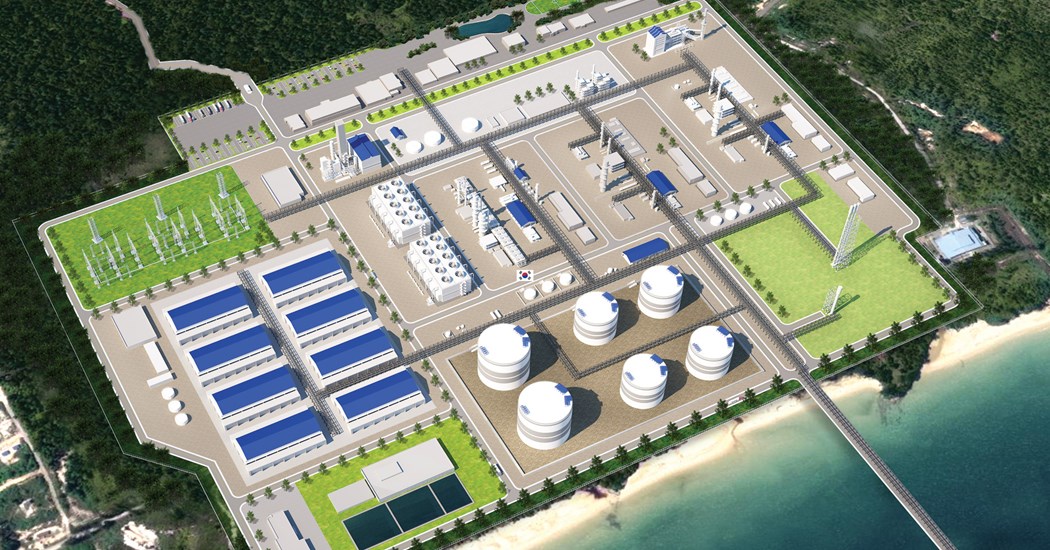.jpg)
City of Kuching in Sarawak. (Photo: iStock)
Sarawak, a state abundant in oil resources, is poised to emerge as a hub for clean hydrogen energy. Leveraging its ample hydropower reserves, it seeks to overcome obstacles hindering the fuel's potential elsewhere.
Sarawak's major investment in clean hydrogen
In Kuching, Sarawak is investing $3.4 billion in power-to-transport projects. Fuel-cell buses from China operate freely on city roads, refueling at multi-fuel stations equipped with hydrogen bays. Officials travel in Toyota's Mirai, the world's first mass-produced hydrogen fuel-cell vehicle.
Sarawak, equivalent in size to England with a population of 2.5 million, boasts abundant rivers and rainfall ideal for hydropower generation, crucial for producing emissions-free hydrogen. In Kuching, a city of over half a million, hydrogen adoption is more feasible. Sarawak's true potential lies in its ability to facilitate large-scale overseas commercialization of hydrogen.
Globalizing Sarawak's hydrogen remains expensive and complex. Building new infrastructure for gas production, transportation, and utilization is necessary. Due to hydrogen's low density, it must first be converted into another liquid compound for transport.
Challenge lies in transportation
According to the International Energy Agency, global hydrogen use increase to 95 million tons in 2022, and less than 1% of the total was low-emissions fuel.
Minh Khoi Le, head of hydrogen research at Rystad Energy, said, “The fundamental challenge with hydrogen lies in its transportation logistics, as most hydrogen currently used is situated near demand centers.”
Still, two Asian nations viewing hydrogen as pivotal for transitioning to green energy have targeted Sarawak as a major fuel supplier.
Japan, South Korea eye hydrogen export
South Korea's private sector has committed billions to build a clean fuel value chain, while Japan aims to boost hydrogen consumption to 20 million tons by 2050, up from about 2 million tons presently, as outlined in its 2017 hydrogen strategy update in June.
The largest energy firms of both countries are collaborating with Sarawak's state-backed SEDC Energy to construct two hydrogen plants named H2ornbill and H2biscus in Bintulu, named after the state bird and Malaysia's national flower.
The Japan-funded H2ornbill plant will convert hydrogen into methylcyclohexane (MCH) for export to Japan, while H2biscus will produce ammonia for export to South Korea.
Scheduled for potential commercial launch in 2028, the two projects aim to collectively produce 240,000 tons of hydrogen annually, rivalling the output of Saudi Arabia's Neom plant, set to become the world's largest by 2026 with an estimated production of 291,000 tons per year.

Sarawak's hydrogen plant, H2biscus, will produce ammonia for export to South Korea. (Image: Samsung E&A)
Price obstacles remains
Malaysia's appeal lies in its anticipated status as the Southeast Asian country with the lowest production costs for green hydrogen by 2035, forecasted by BloombergNEF to be about 20% lower than in South Korea.
Shohei Yasuda, from Eneos’s hydrogen promotion department, emphasized the importance of a stable and cost-effective electricity supply for Japan's hydrogen goals.
Despite Malaysia's cost advantage, green hydrogen still faces significant price obstacles compared to much cheaper fossil fuels. Natural gas, for instance, is currently priced at about a quarter of green hydrogen produced using Western technology. Moreover, this doesn't factor in the costs associated with liquefying and converting hydrogen for export.
Liquefying hydrogen is also energy-intensive and costly, consuming over 30% of the fuel's energy content. Additionally, hydrogen is less dense than liquefied natural gas, necessitating the development of new fleets, infrastructure, and technology for large-scale transportation.
The technology is still in the midst of proving itself. The largest green hydrogen project, situated in western China, faces challenges related to efficiency and adaptability. Its electrolyzers are currently the cheapest but encounter difficulties in handling power fluctuations from sources such as solar energy.
Hydropower is the key
Sarawak emphasizes its access to unrestricted hydropower as key for averting such issues.
“Our advantage is of course hydropower,” said Robert Hardin, CEO at SEDC Energy. “We don’t have that issue of intermittent supply.”
Despite the challenges in practical application, Sarawak is making huge strides domestically. Its most ambitious project to date is the planned 5.59 billion ringgit autonomous hydrogen-fuel tram line, expected to start operations as soon as next year. This trackless tram system, constructed by a subsidiary of China's CRRC, has yet to be commercially deployed anywhere globally.
Other plans in the works in the state include hydrogen-powered waste collection trucks and medium-sized boats, which are a common form of commuting in more rural areas.
With abundant water and hydrogen resources to fuel its ambitions, Sarawak may emerge as a model state for hydrogen. However, Flis from Kaya Partners warns of the potential risk of investments failing and projects becoming white elephants.
Facing the risks, Sarawak Premier Abang Johari said, “It is a risk, but it is a calculated risk. There is no other option; we need alternative energy, and ultimately, hydrogen is the cleanest.”


